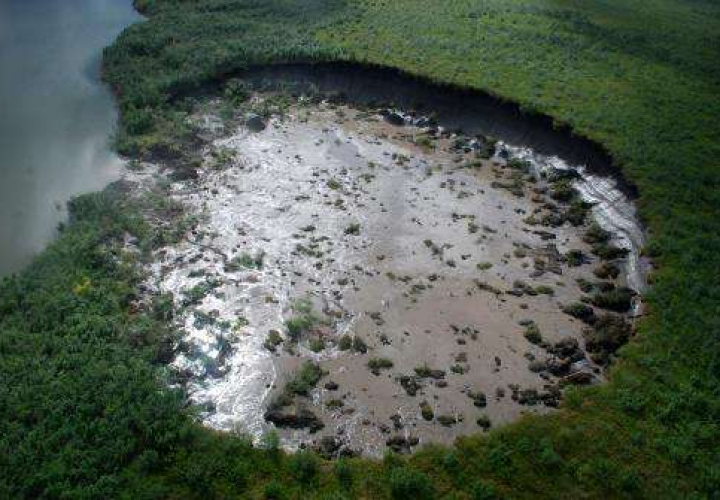
Green Credit and Circular Economy for Resilient, Sustainable Future
According to the IPCC, climate change is already affecting species in terrestrial, freshwater, and ocean ecosystems around the world, future warming will make impacts worse.
More frequent and more severe extreme events like droughts, floods, and fires, along with habitat degradation, changes in water cycles, and heat stress challenge most animal populations which all reflect a change in biodiversity. It is a crucial phenomenon to tackle.
As per the Climate Change Performance Index 2023 report, India secured 8th position in the index. Since no country was strong enough in all index categories to achieve an overall very high rating, thus the top three places i.e 1-3 are vacant. Thereafter India is amongst the top 5 countries. With India (8th), the United Kingdom (11th), and Germany (16th), only three G20 countries are among the high performers in CCPI 2023.
Net-Zero Climate Impact By 2030: Our Progress And What Lies Ahead
Presently following major massive actions are initiated worldwide to tackle greenhouse gas emission and protect the environment from climate change.
i) Carbon Capture Technology:
Researches shows that carbon capture, usage and storage (CCUS) can play a strategic role in global decarbonisation efforts in a number of ways. These include:
- Reducing emissions in ‘hard-to-abate’ industries (those that are particularly difficult to decarbonise);
- Producing low-carbon electricity and hydrogen, which can be used to decarbonise various activities; and
- Removing existing CO2 from the atmosphere. The various roles of CCUS can also help make the energy supply more diverse and flexible, in turn contributing to energy security, which has become a growing priority for governments around the world.
ii) Green Hydrogen
Green hydrogen is the one of the empowering concepts on India’s journey towards energy independency and net zero emissions. There are some challenges as well in harnessing green hydrogen. Recently, Government of India allocated a budget 17,000cr for providing incentives and support for the process of green hydrogen manufacturing. All these initiatives and programs aim at catalysing research and innovation
iii) Other Initiatives by Government of India
Lot of activities like plantation drives, cleanliness drives, green pledges, etc. has been initiated by Govt of India. Various demand side flagship programs such as UJALA, PAT Scheme and Standards and Labelling Programme, introduction of EV, etc. that have contributed significantly to this goal of net zero.
The aggressive policies of India towards rapid deployment of renewables and robust framework for energy efficiency programs have shown considerable impact. As per the CCPI report, India is on track to meet its 2030 emissions targets (compatible with a well-below-2°C scenario).
New Initiative To Accelerate
The resources of our planet are limited. Developing markets are using sustainable development potential to reach zero-carbon goals. Due to the limitation of natural resources, we need to use environmentally friendly method to develop a circular economy (CE).
Emerging challenges during this transition, whether actions taken by businesses and governments are enough, and what potential solutions look like.
Mere using above discussed techniques will not help to maintain the sustainability in reduction of greenhouses gases and to protect the environment from climate change. The ‘net’ in net zero is important because it will be very difficult to reduce all emissions to zero on the timescale needed.
As well as deep and widespread cuts in emissions, we will likely need to scale up removals. In order for net zero to be effective, it must be permanent. Permanence means that removed greenhouse gas does not return into the atmosphere over time, for example through the destruction of forests or improper carbon storage.
Instead of treating the disease we should find out the root cause of the same and treat it at grass root level. Hence, we are committed to establishing the circular economy as a sustainable, future-oriented concept in the industry and to protect the Earth in this way by introducing green credit.
While the domestic carbon market focuses solely on CO2 emission reductions, the Green Credit System aims to meet other environmental obligations as well, incentivizing sustainable actions by companies, individuals, and local bodies.
- Circular Economy
The circular economy is oriented to nature as its role model. In essence, the concept of the circular economy aims to keep raw materials in a closed loop. In this way, resources are maximally used, the need for new ones is reduced, waste is avoided, and the life cycle of products is increased. In short, the waste of today becomes the raw material of tomorrow - the same as in nature.
In this way, the circular economy differs from the current economic system i.e. the linear system, in which products are manufactured, used and disposed of.
In the traditional economic model followed globally, raw materials are collected, transformed into products, used by consumers, and discarded as waste. This waste contributes almost half of all global CO2 emissions, while negatively affecting human health and the environment. In contrast to this linear model, a circular economy focuses on the principles of reduce, reuse, and recycle, to minimize the impact on the environment as much as possible. In fact, as an alternative model, the circular economy could yield up to US$4.5 trillion in economic benefits by 2030.
- Green Credit
Recently, the Ministry of Environment, Forest and Climate Change, Government of India has notified the draft ‘Green Credit Programme (GCP)’ implementation rules for 2023
Government of India introduced ‘LiFE’– ‘Lifestyle for Environment’, as a grassroot, mass movement for combating climate change, enhancing environment actions to propagate a healthy and sustainable way of living based on traditions and values of conservation and moderation, and for sustainable and environment-friendly development. It is an innovative market-based mechanism is required to promote the LiFE movement which aims at encouraging sustainable lifestyles by driving consumer/community towards behavioural changes to incentivize environment friendly practices.
The programme launched at the national level to leverage a competitive market-based approach for Green Credits thereby incentivizing voluntary environmental actions of various stakeholders. Green Credits will arise from a range of sectors and entities, ranging from small-scale ones– such as individuals, Farmer Producer Organisations, cooperatives, forestry enterprises, and sustainable agriculture enterprises; to those being developed at the level of Urban and Rural Local Bodies, private sectors, industries, and organizations.
Green Credits will be tradable outcomes and will act as incentives. In the beginning, Green Credits will be made available to individuals and entities, engaged in selected activities and who undertake environmental interventions. These Green Credits will be made available for trading on a domestic market platform. An activity generating Green Credits under Green Credit Programme may also get Carbon Credits from the same activity under the carbon market.
The ‘Green Credit’ means a singular unit of an incentive provided for a specified activity, delivering a positive impact on the environment. The Green Credit Programme as a mechanism that complements the domestic Carbon Market
The green credits will be tradable and those earning it will be able to put these credits up for sale on a proposed domestic market platform.
a) Green Credit Activities:
A phased and iterative approach for implementation of the Programme will be adopted. In the initial phase, two to three activities from the sectors indicated in clause (2) will be considered for designing and piloting the Programme. More activities will be added from the selected sectors in subsequent phases. More sectors can also be added with the approval of the Central Government.
b) Sectors identified for the programme with respective objectives are as follows:
- Tree Plantation-Based Green Credit: To promote activities for increasing the green cover across the country through tree plantation and related activities.
- Water-Based Green Credit: To promote water conservation, water harvesting and water use efficiency / savings, including treatment and reuse of wastewater.
- Sustainable Agriculture-Based Green Credit: To promote natural and Regenerative Agricultural practices and land restoration to improve productivity, soil health and nutritional value of food produced.
- Waste Management-Based Green Credit: To promote sustainable and improved practices for waste management, including collection, segregation and treatment.
- Air Pollution Reduction-Based Green Credit: To promote measures for reducing air pollution and other pollution abatement activities.
- Mangrove conservation and restoration-based green credit: To promote measures for conservation and restoration of mangroves.
- Ecomark-based Green Credit: To encourage manufacturers to obtain ‘Ecomark’ label for their goods and services
- Sustainable Building and Infrastructure-based Green Credit: To encourage the construction of buildings and other infrastructure using sustainable technologies and materials.
c) Methodology Of Generating Green Credits:
Thresholds and benchmarks will be developed for each Green Credit activity for generating and issuance of Green Credits. In case of any obligation under any law, the thresholds and benchmarks will be aligned with that obligation.
To maintain fungibility across sectors, the environmental outcome, achievable by any Green Credit activity, will be based on equivalence of resource requirement, parity of scale, scope, size and other relevant parameters, and will be considered for allocation of one unit of Green Credit in respect of each activity.
Digital processes will be developed and established for the Programme including self-assessments of eligible Green Credit activities.
Through the programme, thresholds and benchmarks will be developed for each Green Credit activity. Activities, issuance of Green Credits, monitoring of performance and other relevant processes.
d) Way Forward
Our Govt is providing lot of incentive scheme like subsidy for electrical vehicle, green building interest incentives, viability project funding, tax holiday, green credit scheme, etc.
However, there is lot of corporate responsibility that are obligatory in nature - disclosures of activities like CSR, business responsibility reporting, policy on use of machineries raw materials from sustainable source, environment impact assessment etc.
Next one is regulatory responsibilities like implementation of green bond /deposit scheme etc. as apart of sustainable finance, lending money for environment friendly projects, regulations to check and follow actual impact of business, energy conservation and building code like use of solar heaters in the building, carbon credits, green credit etc. Carbon trading scheme implementation in its true spirit. Renewable energy certificate scheme, building design structure for utilisation of natural light and energy. A phased and iterative approach for implementation of the green credit Programme.
Healthy ecosystems can increase resilience and keep people safer from climate impacts. Let’s work for that and pray for that. If we reduce deforestation, restore ecosystems, manage to help the soil to store more carbon, and improve farming techniques, nature can absorb more carbonas the nature has self-healing technique and nature offers protection as well. Healthy ecosystems can increase resilience and keep people safer from climate impacts.





